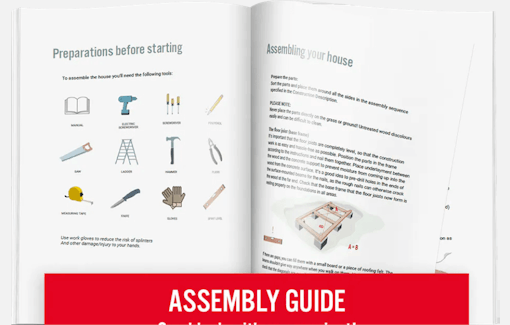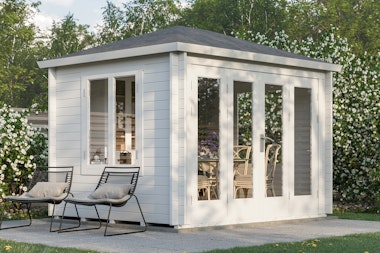
The history of the gazebo
Hanna Bergström / 2 min reading / Gazebo
Gazebos may be popular now, but they're certainly not a new phenomenon. As early as the 17th century, when Renaissance gardens had exciting features such as mazes, gazebos were often included. After that came Baroque gardens with their geometric patterns - and gazebos too. During the second half of the 18th century the gardens and public parks of the Romantic period started to appear. Away with right angles and mazes, it was time for winding gravel paths, bridges with arches, irregular stone sections, and, once again, gazebos.
It was probably in the 18th century that the gazebo had its heyday, but they've been fixtures in fancier gardens ever since. Sometimes they come in the form of greenhouses, preferably heated, and are often called 'orangeries'. But it's not only in city gardens and the gardens of stately homes that the gazebo has been popular. They've also been found in private house gardens, both nowadays and in the past. When allotment gardens were laid out at the beginning of the 20th century and small allotment huts were set up in them, these were also sometimes called gazebos. Anyone who didn't have their own country house could get their own small summer dwelling - a small hut in their allotment.
Since gazebos have existed in many parts of the world, the style has been inspired by different countries, including China, Greece and Italy. The origin of the word 'gazebo' is an 18th century word created using a Latin grammar joke, using the word 'gaze' - to make 'I shall gaze'. From the beginning, a gazebo could have pretty much any appearance, for example square with sloping ceilings. Nowadays, however, they're often octagonal with a pointed cone-shaped roof. They can even be completely round, but that's almost impossible if you're using wood, so the octagonal shape is a good compromise. Most have lots of windows and some have windows all around, even in the doors, so that there's natural light on all sides. This gives the illusion of being outdoors. A gazebo can have more than one floor, but in a normal-sized garden it would probably be difficult to get a two-storey gazebo to blend into the surroundings.
That blending-in is the ultimate intention. Regardless of whether the house is in the garden of a stately home or on a residential plot, a gazebo should be harmonious with the garden in a discreet and sophisticated way, while at the same time making its own mark. Naturally, the owner can make their mark too, by choosing the gazebo's colour and design according to their own taste.
The best way to get started - our guide!

The best way to get started - our guide!
The assembly guide contains valuable tips and advice from our construction experts. A good base and a manual for those who plan to assemble the house themselves. We walk you through what’s important to consider before starting construction, the foundation options our experts recommend, and how the assembly works.
Read all about this and much more in our guide. We will send the assembly guide free of charge to your email. Good luck with your project!





